In the first part of the room dedicated to mineralogy and petrography we find samples of minerals and rocks from all over the world. The last section provides an account of local mineral deposits.
The first group of exhibits of the museum’s mineralogical collection includes minerals from Elba, the Carpathians and Sicily, donated to the institute between 1887 and 1888. Rocks from railway construction sites in the Liguria region and from excavation work on the St. Gotthard tunnel were obtained in 1886. These items are the first of the lithological samples to be included in the petrographic collection, to which, in the meantime, many other samples have been added, including a large collection of especially attractive and historically important ornamental stones. Before leaving the room, don’t forget the tactile exhibition area dedicated to the various physical properties of minerals.
The theme of mineralogy is introduced with an explanation of what minerals are, illustrated with samples, structures and crystallographic models of calcite and halite. Information is provided on the physical properties of minerals, and on certain more highly complex concepts, such as twinning, polymorphism and isomorphism. The next section is dedicated to systematic mineralogy, based on Hugo Strunz’s classification, whereby minerals are grouped into nine classes on the basis of criteria derived from chemical crystallography. In other words, based on chemical composition and crystalline aspect. Here, certain crystallographic structures and models are exhibited to clarify the information provided, alongside samples of the mineral being dealt with. On the wall to the right of the entrance, we find a periodic table, provided as an aid to our understanding the various elements present in the chemical formulas mentioned in this section.
{rokbox album=|myalbum| title=|Mineralogia|}images/stories/museo/ESPOSIZIONI/04_SCIETERRA/MINERALI/MINERALOGIA/*{/rokbox}
The theme of petrography opens with an explanation of what rocks are, and with an account of the methods most widely adopted to study and classify them. Rocks are classed under three petrographic group headings: magmatic, sedimentary and metamorphic. The many lithological samples are presented alongside photographs of thin sections of these materials. These transparent laminas, examined under special microscopes, provide a fundamental means for distinguishing between rock typologies. These instruments enable us to pinpoint the typical colours and striations of the minerals that make up rocks. They also enable us to pinpoint microstructures – of fundamental importance in our efforts to understand the genesis of these materials.
{rokbox album=|myalbum| title=|Mineralogia|}images/stories/museo/ESPOSIZIONI/04_SCIETERRA/MINERALI/PETROGRAFIA/*{/rokbox}
Another part of the room is dedicated to the main mineral deposits of use to Man in the province of Bergamo and in immediately adjacent areas. Indeed, up to the mid-twentieth century, these natural resources were one of the major sources of wealth within the economy of the highland districts. Each category described is introduced with historical information, and is accompanied by detailed analysis of the most important deposit. Information is also provided on the genesis of the materials, mineralogical associations and geographic distribution. While mining, as such, is one aspect, we must also consider other extraction and diagnostic activities – which have played a significant part in the economic life, history and traditions of certain zones of the area of Bergamo, namely whetstones and hydrocarbons.


